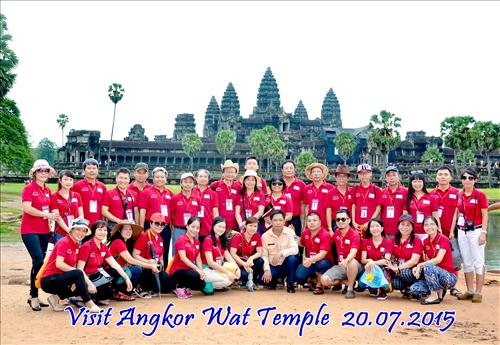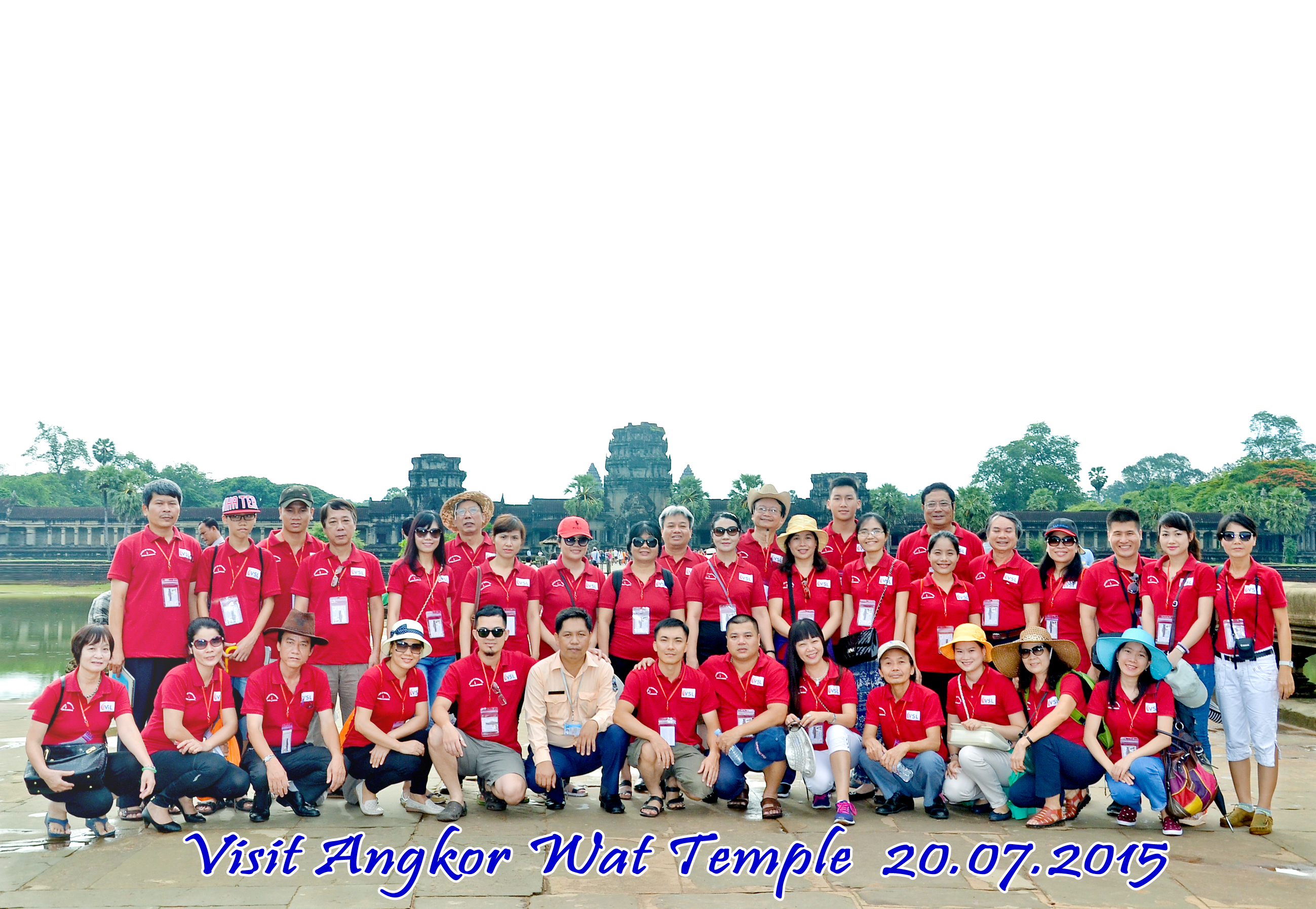
Early in the morning of July 19th, we left Saigon and headed straight for Siem Reap. Starting from Moc Bai, the scenery seemed to have changed dramatically compared to the southeastern region of Vietnam we had experienced a few days earlier. For hundreds of kilometers, apart from the sparse rows of small houses along the highway, there seemed to be no villages at all. As far as the eye could see, there were vast, uncultivated grasslands, occasionally interspersed with patches of rice paddies, rubber plantations, or a herd of cattle. The teachers who had worked here for years enthusiastically recounted their memories and introduced us to everything from the local products to the history and customs of this land. Our car glided through the vast, empty Cambodian landscape, sometimes quiet, sometimes lively with the singing of Vietnamese and Khmer songs; everyone was captivated and eager.
By the time we arrived in Siem Reap, it was already late afternoon, so after dinner, we went to the night market. The decor of the Siem Reap night market reminded us of Hoi An, but the atmosphere was similar to the Western Quarter in Saigon, and the night air was cool and crisp like a southern night. Tourists from all over flocked to the bars to listen to music, drink, sing, dance, and make friends. We lingered there, enjoying both the street food and the lively atmosphere of the Siem Reap night, as if to boost our spirits in preparation for our journey back a thousand years to the Khmer kingdom.

Angkor Wat, Angkor Thom, and many other magnificent ancient structures welcomed us on a day of gentle sunshine. These exquisite temples, despite the ravages of time, were still breathtakingly beautiful, beyond the imagination of those who had never set foot here before. Not only were Angkor Wat and Angkor Thom intricately crafted and refined, but they were also massive and expansive, making a full day of sightseeing still not enough. The unique sight of Ta Phrom, with its strange vines climbing the roofs of the ancient structures, also left a strong impression on viewers. At the end of a day filled with historical sites, we relaxed by immersing ourselves in the...Smile of AngkorThe visually stunning art program draws inspiration from the mystical Bayon smiles to recount the historical journey and philosophy of Cambodia during ancient and medieval times. The smiling lips on the Bayon temples allow the thousand-year-old Angkor, with its solemn cliffs, to retain its youthful freshness, pulsating with hope in this country that has suffered so much loss.
The next morning we left the city of temples for Phnom Penh, a place steeped in memories of the older generation of teachers in our Faculty about their years teaching Vietnamese language and culture. In the 1980s, many young Vietnamese intellectuals, including faculty members from our Faculty, accepted many difficulties and dangers to support Cambodia's peace reconstruction through education. Professor Nguyen Thien Nam, the Dean of the Faculty, who spent the longest time in Cambodia and remains fluent in Khmer to this day, not only shared many interesting stories about the "hardworking lives" of the teachers during that time but also sang captivating Khmer songs. Returning here, for the older generation of teachers, was almost like returning to their old home.
In Phnom Penh, we visited the Independence Monument, the Vietnamese Volunteer Soldiers' Memorial on the capital's most beautiful street, the Royal Palace, the Golden Pagoda and the Silver Pagoda – structures that, despite many vicissitudes, still retain their splendor and sophistication. We revisited the Royal University of Phnom Penh – where many of our faculty members had taught, and revisited Mango Village – where our teachers had lived during those years. The scenery hasn't changed much, but the people of the past are gone, leaving everyone feeling both joyful and nostalgic. We also visited the Tuol Sleng Genocide Museum, which preserves stories and visual images of the Khmer Rouge's atrocities. All of this served as a profound reminder of the inseparable relationship between peace and national independence.
The time that gave us the most insight into modern life in Phnom Penh was our afternoon stroll through Phsa Thmey market. Here, we found not only a wide variety of Cambodian specialties but also many imported goods at more affordable prices than in Vietnam. Interestingly, Vietnamese currency was readily available for payment here. Another surprise was that most of the Cambodians we spoke to knew a little Vietnamese. Their understanding of the Vietnamese language and customs inspired us to reflect on and hope that one day, Vietnamese people will have a more comprehensive understanding of Southeast Asian countries, especially those sharing a border, thus fostering friendship.
As the final sunset fell over Cambodia, we sat on a cruise ship, admiring the sun sinking into the four-sided river, known in Khmer as Chatomuk. The wind was strong, and the atmosphere so peaceful that it was hard to believe the losses still haunted the land and the hardships seemed never-ending. The Royal Palace shone brightly, its light reflected in the river, as we raised our glasses, wishing for this land to remain so serene, and silently hoping for peace between the two countries.
Leaving Cambodia, our hearts were filled with happiness and nostalgia. We had spent five days enjoying countless material and spiritual delights, listening to countless stories, and exploring a truly unique land—half rustic, half mysterious, half familiar, yet still somewhat unfamiliar. These experiences were all the more precious shared with our colleagues, friends, and family—knowledgeable, kind, warm-hearted, and cheerful people. We look forward to exploring new horizons together.
Author:Le Nguyen Le
Newer news
Older news